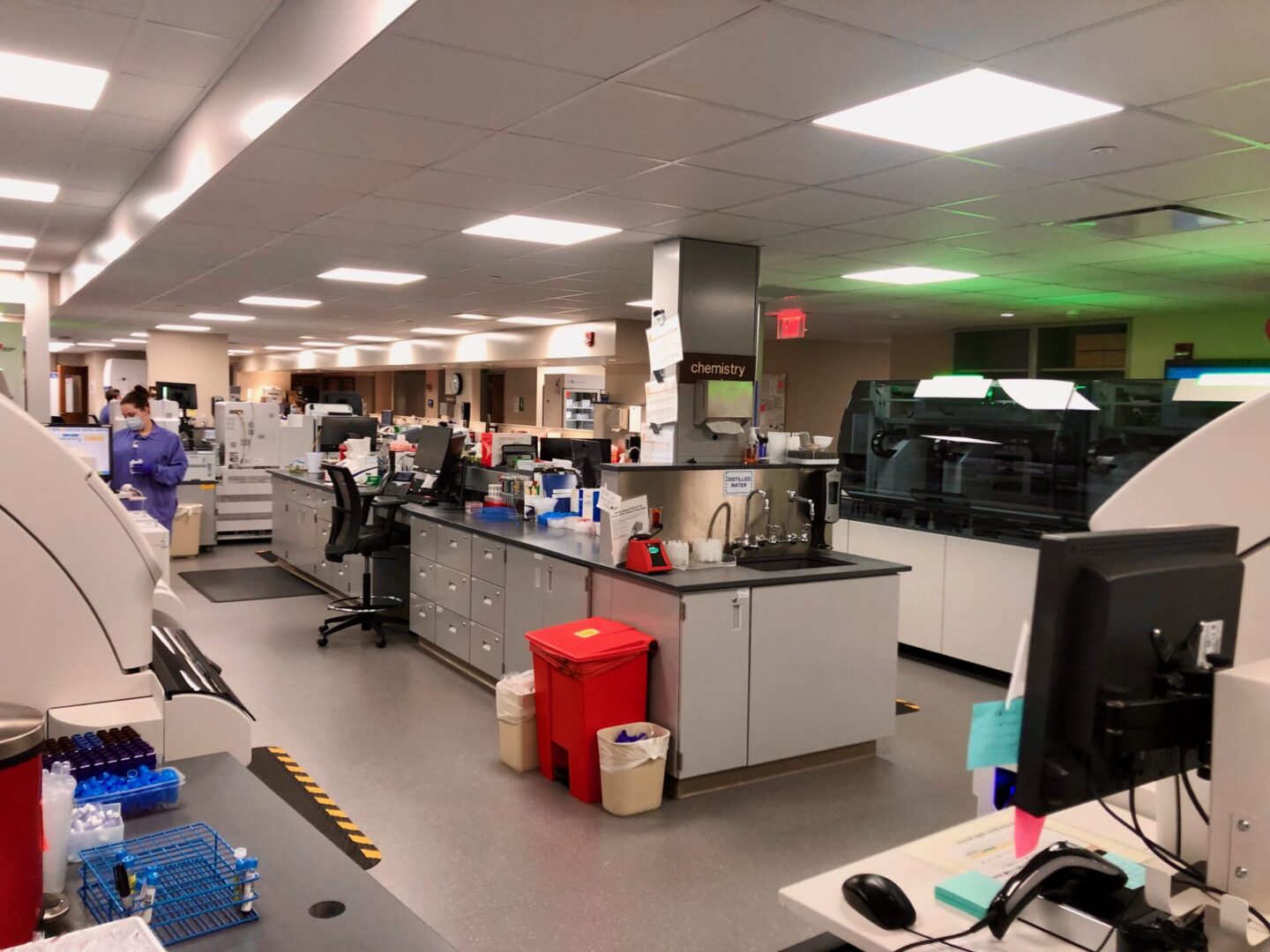Mount Nittany Medical Center’s clinical laboratory completes millions of tests annually, and until very recently its team of professionals conducted that work in first-floor spaces that haven’t seen any major renovations since the hospital opened in the 1970s.
That changed with the completion of Mount Nittany’s new $9 million lab, which provides an improved workspace and updated technology to increase the speed and efficiency of processing samples.
Mount Nittany Health officials and staff held a ribbon cutting on Monday afternoon for the new lab and its centerpiece, a recently acquired $2 million automation system.
“The space itself is very conducive to good health. It’s got bright natural light. It’s new and open. It allows for great communication with the staff,” Laboratory Manager Kristin Klinefelter said. “As far as the community, this is the future. This technology is our future. Having a piece of equipment like this allows us to process specimens faster, and get great results out to the providers which is ultimately what the patient needs at the other end.”
The lab performs more than 2.5 million tests each year throughout its departments, which include anatomic pathology, blood bank, core lab, cytology and microbiology.
“Behind everyone of those 2.5 million tests is a patient and a family waiting for a result that is going to have an impact on their health, on their treatment, on their diagnosis,” Mount Nittany Health President and CEO Kathleen Rhine said.
The design phase for the new lab began in 2019 and construction began in 2021. Staff transitioned to the new lab with upgraded equipment over the course of several months in 2022.
At the lab’s center is what Klinefelter called “the piece that holds it all together,” the new Beckman Coulter DxA 5000 automation system, which performs specimen processing to free up staff to do testing work.

Sean Gerding, Northeast area lab automation sales manager for Beckman Coulter, said his company began collaborating with Mount Nittany on the vision for the lab about seven years ago, and hundreds of people have been involved. Beckman Coulter has been working in automation for more than 30 years, and the DxA 5000 represents its fourth generation of automation.
“What makes this generation so special is that we have patented proprietary optical sample characterization capabilities that allows the lasers on the system to read through the barcode labels of each individual tube to see what’s going on with that sample condition, where normally people would have to stop, look at those tubes, make sure they meet a lot of different sample quality checks, peel back the labels to make sure they’re sufficient for automation before they can be processed,” Gerding said.
“So this system builds in a lot of proprietary optical sample characterization capabilities in addition to artificial intelligence to minimize the number of tube touches and interventions that have to be done to generate a patient result.”
Unlike older systems, it doesn’t use a conveyor belt, but instead a plastic track that is guaranteed for 10 years. It also doesn’t use compressors and is “a very quiet system that’s all driven off a linear motor,” Gerding said.
It has four transportation lanes for samples to be delivered to and from different devices, and then puts them into a refrigerated stockyard. The machine can connect to other Beckman Coulter and third-party systems, so the lab has the infrastructure to plug in the desired devices that they want for testing.
“The technology is phenomenal and will bring a tremendous level of improved patient care within the greater state college area that we all serve,” Gerding said.

Getting to the completion of the lab has had “twists and turns, stops and starts,” Rhine said, not least of which were challenges created by COVID-19.
Dr. Sarah Carroll, pathology physician, said the move has been long anticipated and well worth it. The old lab was separated into two area, but the new one has brought them together in an open space.
“[It has] beautiful sightlines and if you get a chance to look at the view, it’s amazing,” Carroll said. “Having been in a lot of labs before, they’re usually kind of quarantined into some dark basement. You need a map to find it and sketchy hallways. I’ve never seen a lab have this kind of view, this kind of light and this openness here.”
In the end, Carroll said, the improvements are about providing quality service for patients.
“All the effects, the new automation line, the people, everything that they do here, it all kind of trickles down into direct patient care, which is what we really care about in the improvements that we make,” she said.

The new lab is one in a series of recent facility expansions and renovations for Mount Nittany Health. The health system is currently building a $90 million, 126,000-square-foot outpatient center at Toftrees West. Construction is expected to begin this year on a $350 million, 10-floor addition at the medical center that will include 168 private patient rooms, outpatient services and a parking deck.
Other initiatives include the renovation of the imaging department at the medical center to create a newly designed diagnostic pavilion on the main floor of the hospital, the addition of a new inpatient dialysis unit and expansion of the Joseph V. and Suzanne P. Paterno Women and Children’s Services Unit women and children’s unit.



